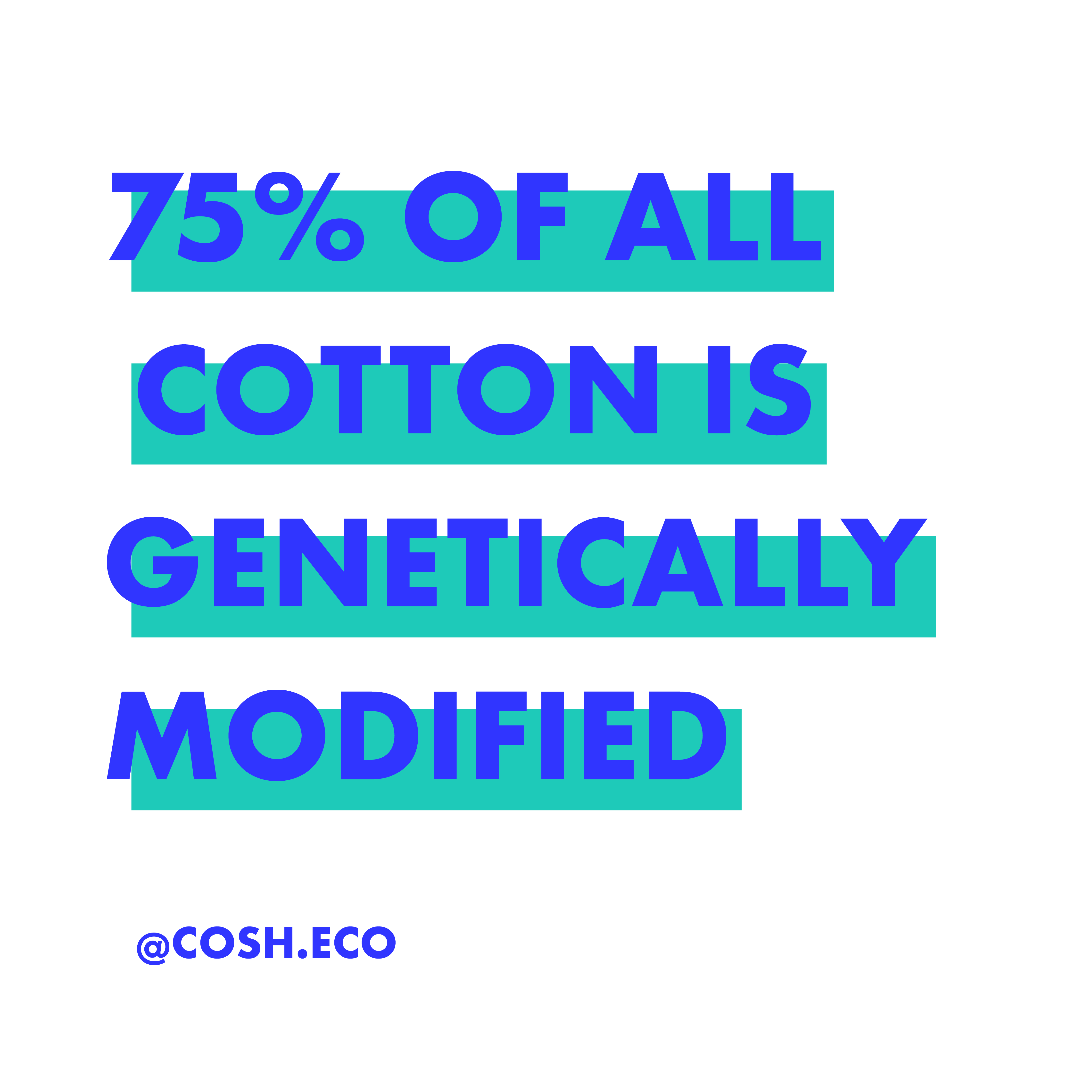
6 November 2025
Sunlight and colour: the hidden drivers of microfiber pollution in the ocean
- Plastics
Many cotton farmers have switched over to genetically modified seeds (GMOs) to make their plants resistant to fungi and other diseases. Today 75% of all cotton is genetically modified. The biggest producers? You’ll find them in India, China, Pakistan and the US. GMO cotton is resistant against different insects, diseases and lack of water, leading farmers to expect bigger harvests. But is this the case?

Genetically modified cotton seeds have been modified to improve certain features.
There are 2 main types of GMOs:
The first type is ‘Bt-cotton’, which is modified so that it will produce a poison that kills insects. The cotton plant is therefore able to protect itself from hungry insects. The substance produced by Bt cotton is toxic for the larvae of moths, cotton bollworms and beetles, to prevent these animals from damaging the plant.
The second type is made resistant to herbicides, such Monsanto’s Roundup. This herbicide is designed to kill all the weeds and plants surrounding the genetically modified cotton. Through this GMO variant, farmers hope to increase their harvests as there will no longer be competition with other plants for nutrients or water. The GMO cotton plant will be the only one to survive the herbicide.
Some genetically modified cotton plants are automatically resistant against certain diseases and insects, so that farmers need less fertilisers and pesticides. This is beneficial to their wallets, but also to the environment. It would seem then that Bt cotton means less chemicals are needed, right? Seems positive? But GMO cotton sadly also has a very dark side.
GMO crops are said to yield bigger harvests but these fail to materialise. One study found that between 2005 and 2012, Indian harvests of the GMO cotton plant Bt cotton only increased by 2%. This increase was also due, however, to improved farming techniques. So, why is it that harvests don’t improve with GMO seeds? The answer is that pests and insects adapt incredibly quickly to these new GMO plants. Nature is extremely smart, and adapts naturally leading to new pests that the Bt cotton plant was not built to resist.
Several studies have shown that GMO cotton plants in themselves are not harmful to our health, nor to the farmers. However, the problem is that harmful chemicals, which do harm our health, are used in the farming process. GMOs also support unsustainable cotton production, and work against growing organic cotton.

Of all commercial seeds more than half of them are in hands of only 3 firms: Monsanto, DuPont and Syngenta. These big multinationals force farmers to be dependent of expensive seeds and matching pesticides. Who does not or cannot join, is excluded and has to sell his land or becomes a slave of the system. This has a big impact on the good mood of cotton farmers which leads to suicides of cotton farmers in certain countries.
Farmers are heavily dependent on the companies from which they buy the GMO seeds. Once the farmer plants the GMO seeds, unlike with ordinary seeds, they are not able to keep the seeds to plant them the next year. They are forced therefore to buy these expensive GMO seeds every year, along with the needed chemicals from the sister company. That means that after a bad year or harvest then farmers will need to purchase new seeds.
The switch from GMO cotton to organic cotton is essential! In organic cotton farming, artificial chemicals are banned meaning the soil is healthier and biodiversity richer. This holds many benefits for our health and also nature! Did you know that in a biodiversity-rich environment, the insects, fungi that would attack the cotton plant are automatically controlled by their natural predators? That’s right, biodiversity protects the cotton plants so no extra harmful chemicals are needed to repel the pests. Nature does the job by itself. A much cheaper and environmentally friendly solution than GMOs!
In addition to multinationals’ strong opposition, the switch to more sustainable cotton production takes a long time. When farmers want to switch to organic cotton, they encounter many challenges. For example, farmers are often sued by GMO producers because they found remnants of GMO cotton on their land and accuse them of fraud.
It’s almost basically impossible to grow cotton organically on previous GMO lands because the soil has been stripped of all its nutrients. Extra money is therefore often needed to be able to leave the land fallow and restore its nutrients. Unfortunately, this money is often not available.
Sustainable suppliers and brands can play an important role in the transition to organic cotton. Thanks to good cooperation and fair prices, they can help support farmers in their transition to organic cotton farming.
By purchasing only from sustainable brands and choosing organic cotton, you help farmers make the switch to sustainable cotton farming
Also read:
The benefits of organic cotton
What impact does cotton have on humankind and the environment?

6 November 2025

29 October 2025

20 October 2025